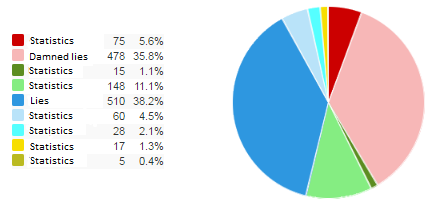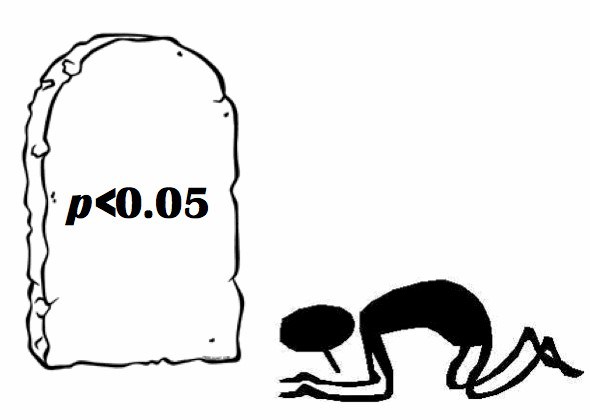You’re at the start of your dissertation, and the most difficult decision, it seems, is already in front of you: Do I do a qualitative study, or do I do a quantitative study? What are qualitative and quantitative studies? What even am I studying?
While the last question is for a different time, the others are very much relevant for what we will be talking about here. You’ve likely heard a bit about each method (yes, they’re called methods!). Others in your program with you, candidates who are further along in their dissertations, and people on obscure message boards populated with desperate students all have answers:
“A quantitative study is way easier. Just send a survey to people you know! It’s way easier than trying to do interviews!”
“Oh, definitely qualitative. I like talking to people, and this is what that is. Numbers are scary!”
While those are caricatures of actual expressed opinions, they’re not actually that far off; and in some ways, they’re not actually that far off from reality. There certainly are many differences between the two, but what exactly they are and how they apply not only to the dissertation, but to your dissertation, is something much more difficult.
You definitely don’t want to make the wrong decision, though, and many people reach out for help with their dissertations to navigate this issue specifically. A consultant who works with dissertation research, who knows qualitative and quantitative analysis, can help you to avoid a tragic realization:
Hopefully, this post shares a bit more information for you and at least points you in the right direction. Turning to an expert with the dissertation process for help is a lot easier when you know a bit about what your questions are. The short of it is, well, it’s complicated.
Vocabulary Lesson!
Before we even get into the nitty gritty (slightly embarrassed to use that phrase), we do need to make sure we’re talking with a common vocabulary. For the dissertation, it’s pretty critical—you’ll even have separate sections in your methods chapter requiring that you’ve got these terms down.
The first is method (or methodology), or approach. These are synonyms, I should say, and they refer to the macro-level classification for your study: qualitative, quantitative, or mixed methods. The last one here might sound intriguing—and it is!—but it’s also like doing two studies. If you’d like that (they can be really cool), then I’ll have more information for you later on about that.
Our focus here will be on the two “main” ones, or actually the two that make up a mixed methods study—the qualitative and quantitative research portions. Again, these are methods (or methodologies) or approaches. They break down, though, into many smaller categories; there are many kinds of qualitative studies, and many for quantitative, too.
The micro-level designation for a study of either kind is called a design. Here are some main ones for each:
- Qualitative—phenomenology, case study, grounded theory, ethnography, action research
- Quantitative—descriptive, correlational, causal-comparative, quasi-experimental, experimental
We’ll observe this macro-versus-micro, method-versus-design distinction throughout, and you should too! As I mentioned, your methods chapter will depend on it, particularly as it’s customary to first explain and justify your method and then explain and justify your design.
We’ll unpack these just a bit more in the following sections.
Qualitative: They’re just, like, words. Right?
They are just words! Indeed, one way of distinguishing a qualitative study from a quantitative one is that it collects data in the form of language, rather than in terms of numbers. These boundaries can sometimes get blurry, but they suffice for our purposes here. Qualitative research uses people’s language as the raw material for analysis. Those data can come from one or two or very many of a number of different sources: interviews, focus groups, questionnaires, observations, archival documents, and even videos and photos (typically, these would be “observed” and thus generate qualitative data in the form of notes of a kind).
Notice that we don’t have any numbers in here! Instead, we have nice, clean words. Under the umbrella of the qualitative approach, though, are a number of designs, as I mentioned above. We’ll talk about each of the main ones:
- Phenomenology. This one is pretty cool, I think, because it’s the closest we can get to un-selfing ourselves to see and experience life the way that someone else does (Groenewald, 2004). And this is the whole goal of a phenomenology study—it’s about the lived experiences of participants, and understanding those is what makes phenomenology phenomenology. Most often, interviews are done here, as they’re the best way to really get into the mind of another person and see things as they do (Groenewald, 2004). Because that’s still a hard thing, interviews are usually quite long, perhaps 60-120 minutes. In some cases, there is even more than one—two- and three-interview protocols exist for phenomenology. Because there is just so much talking, though, there are usually not very many people in that study—about 8-12 is common.
- Case study. Strangely, case study is about a phenomenon (phenomenology isn’t). For instance, it might be the roll-out of an anti-bullying program within a district. You’ll want to interview people (teachers, administrators, parents, even students), but since your concern is the phenomenon of the roll-out, you won’t want to rely on only those interviews. What those interviews convey is perceptions about the roll-out. For a case study, then, you need sources to provide “checks” on those perceptions. In the education example I mentioned, the “classic” model might apply: (a) interviews, often 15-20 in all; (b) observations, perhaps of team meetings or of the delivery of the curriculum in the classroom; and (c) document analysis, perhaps of mailings sent out, curricular documents, and other communication.
- Grounded theory. For our purposes, we’ll describe this is terms of a case study. That design often yields themes through analysis—a grounded theory study will yield theoretical constructs. When you combine them, they make a grounded theory—a theory grounded in the data you collected (Charmaz, 2014; Glaser & Strauss, 1967). Since you’re going all in on a theory as your expected outcome, the data collection here is usually quite intensive, though expectations here vary considerably. Grounded theory studies often involve interviews and other sources, just like a case study does, but the intensiveness of it matters.
- Ethnography. These studies, rather than understanding phenomena, instead seek to understand cultures. The prefix ethno- here would seem to suggest that we’re talking about ethnicity, or perhaps race, as a marker of that culture. That’s definitely a possibility, but it could also be that an ethnographic study focuses on Irish Millennial hack-a-thoners. Or maybe 18th century Japanese cabinetmakers (the cabinets are 18th century Japanese, not the cabinetmakers). Data collection looks similar, often to what is seen in a case study or grounded theory study, and it’s even possible to do an auto-ethnography, where the researcher herself is part or all of the sample for the study (perhaps of first-year principals in turnaround schools; Ellis, Adams, & Bochner, 2010).
- Action research. I have to say that the “action” part of this makes it sound really exciting, like it should be Bo Jackson (“Bo knows qual methods.”) doing the study. It’s usually just regular people—researchers—doing this work, but they’re heroic in taking on social change through it. For most studies, that change is far-off, relegated to the implications section. For action research, though, it’s part of the direct purpose and thus an outcome of the study. It’s commonly used in education and aims often to bring voice to the voiceless and power to the powerless.
That’s only five of them! There are others, to be sure, including narrative inquiry, content analysis, and the Delphi method, all of which are great but less common. Like the ones above, though, they have a lot in common: They traffic in language, using these as the raw material for qualitative analysis. They almost all necessarily gather information directly from participants, often at least through interviews. They also all have small sample sizes, relative to those in quantitative studies (which we’ll see, well, right now).
Afraid of Stats because Seven Eight Nine
I think we should just jump right in: Under the banner of the Quantitative Approach are several design options, and often, these are chosen simply to reflect the study you’re conducting—the way that you’ve framed your research questions and attendant hypotheses. In this way, just like qualitative research, quantitative studies can change this or that detail and fit with a different design. Again, though, all dabble in numerical data, and these can come from myriad sources: surveys (the quantitative equivalent of questionnaires), scores on assessments of various kinds, and financial and other records are just some of the options.
Most quantitative studies have variables, and they’re about the relationship between and among these variables—you’ve heard of independent and dependent variables, but there are also moderating and mediating variables, covariates, and many other things besides. Thankfully, these all are used for studies that can be categorized in five ways:
- Descriptive. The most basic of the options, this kind of study doesn’t actually have an independent variable; instead it has a unit of analysis and then one or more dependent variables. For instance, a study might be about the views of school superintendents (unit of analysis) related to the adoption of the Common Core state standards (dependent variable)—their clarity, usability, suitability, and other factors. What would be done here is only descriptive statistical analysis, perhaps including mean, median, and standard deviation. Because no more complex testing is done, and no relationships are inferred, these studies are usually not seen as being at doctoral level.
- Correlational. Sometimes, these studies aren’t either: they look for relationships between variables. Unlike descriptive studies, they do have more than just dependent variables, and they certainly have more than one. For instance, such a study might be about the potential correlation between district size and student achievement on this or that standardized measure (such as the Common Core-aligned PARCC). However, I should point out that some statistical analysis done for a correlational study doesn’t make use of independent and dependent variables, simply as these tests determine the strength of a relationship but not its direction (i.e., what variable might impact the other).
- Causal-comparative. You might notice a trend in the names here: The designs have pretty accurate names, and causal-comparative (sometimes just “comparative”) is no misnomer—it’s concerned with comparisons (Babbie, 2012). We might be looking at whether female or male students fared better on one or more sections of a standardized test, and we might be concerned about whether one district’s RTI model implementation had a larger impact on test scores than did another’s. The critical focus here is a on a comparison between groups, and one way it might be described is as an experimental set-up that happens just to have been found, rather than conducted. These studies are more sophisticated than are correlational and descriptive ones, and in our move on up the ladder, we get to…
- Quasi-experimental. Now, unlike comparative studies, these are ones that are actually conducted. However, unlike true experiments, they lack random assignment. For instance, in implementing a Culturally Relevant Pedagogy intervention, you might select one class to receive the intervention and not another, but you’re not randomly assigning students to those classes for the sake of your study. However, like experimental studies, you are manipulating the independent variable, in this case whether a CRP intervention is provided. In this way, most quasi-experimental studies are particularly robust because they have experimental and control groups, so it becomes easier to see if manipulating the independent variable causes a change in the dependent variable.
- Experimental. The one downside is that random assignment. Without that, we can’t be sure that any difference results from the intervention itself—it could be differences in the group of students selected and placed into those two groups. This is where a true experimental study is ideal, as the random assignment of participants to groups helps to account for any of these differences. That way, any differences can be more certainly ascribed to the intervention.
Again, some commonalities: They use numerical data, they look for relationships between or among variables, and they use statistical testing to determine these. I know I mentioned moderating and mediating variables, along with covariates above. These are for a different post, but suffice to say that the kinds of relationships that can explored in quantitative studies can be complex!
One final note is that quantitative studies use much larger sample sizes—you need a large number to be sure that your results aren’t attributable to chance (it would be wrong to flip a quarter twice, get tails twice, and then generalize to the whole population of coin flips that they must always come up tails!).
Buckle Up! It’s Time to Decide
It’s impossible to do a methods-less study. Just like Jeff Goldblum said in Jurassic Park, “Methods find a way.” I think that was it. Anyway, your study will need to use a method, and in all cases, it’s useful to think in terms of your access to participants, as well as your comfort level in gaining information.
Here is where it’s helpful to get some consulting for your dissertation, and right at the start—even decisions about topic should be made with methods in mind, weighing their characteristics and whether they’ll be strengths or weaknesses for your study.
Let’s check this out in terms of an actual example: You’re in a DNP program (congratulations on becoming a nurse!), and you notice high rates of turnover among nurses in your rural hospital. You do some research, and you see that some studies on other nurse populations have linked turnover with low levels of institutional support, decreased job satisfaction, and burnout.
You think, “I’ve seen surveys that measure each of these variables!” That’s great, but not so fast: How many nurses might you need to survey, and how many would you need to? Apower analysis would be needed to determine the minimum sample size required for statistical significance (a statistician can help with this), and let’s say it yields a number around 70. That’s a lot! Your rural hospital doesn’t have that many nurses, so it would be difficult to conduct a quantitative study in this way.
You turn back to the literature, then, and find that more in-depth insights about how rural nurses experience units with high rates of turnover have been to be determined. This sounds great for a qualitative study—the sample size need is much smaller (perhaps 8-20 in all), and experiences and perceptions are gained really easily through interviews. From here, you can choose perhaps phenomenology, case study, or ethnography, depending on how you frame your investigation, and you’re off to the races!
Let’s take a break from our regularly scheduled programming to explore mixed methods for a moment. We’ll pretend that you could do both studies—that’s great! You might take on a mixed methods one to see how nurses with high levels of burnout (as determined by a survey) experience their work in a high-turnover unit (as determined by a focus group). You could also compare high- and low-turnover units in terms of burnout and then observe nurses in each to determine more specifically how these units function differently from one another.
Homeland
A quick similarity between qualitative and quantitative research: They yield fascinating conclusions and are completely appropriate for doctoral-level research. This means that the choice really is yours, then.
Again, qualitative studies rely on smaller samples and more intensive data collection to determine the characteristics of phenomena and/or the experiences and perceptions of individuals. They go in without a sense of the results, as they’re open to what emerges from the data. These data take the form of language—often participants’ words from interviews, questionnaires, and focus groups, though also from observational notes and archival documents.
By contrast, quantitative studies have pre-defined variables and aim to determine the presence of relationships between and among those variables. They’re deductive in this way, looking to see “if” something already thought of is true. They work exclusively with numerical data, and because they rely on the need for statistical significance, they generally have larger sample sizes than does qualitative research.
You might still have questions, and it’s definitely okay to reach out for help at the early stages of your dissertation to sort through what these distinctions mean for your study. I’m not sure if I would recommend those lonely message boards, or even others in your program or those who are further along in their dissertations—they’re doing but one study each, and what is a strength for them and their topics might be a weakness for you and yours.
Making the right decision will mean a much more straightforward path than would otherwise be possible, and it also means a stronger study.
References
- Babbie, E. R. (2012). The practice of social research. Belmont, CA: Wadsworth.
- Charmaz, K. (2014). Constructing grounded theory. Thousand Oaks, CA: Sage.
- Ellis, C., Adams, T. E., & Bochner, A. P. (2010). Autoethnography: An overview. Forum
- Qualitative Sozialforschung / Forum: Qualitative Social Research, 12(1). Retrieved from http://nbn-resolving.de/urn:nbn:de:0114-fqs1101108.
- Glaser, B. G., & Strauss, A. L. (1967). The discovery of grounded theory: Strategies for qualitative research. Chicago, IL: Aldine.
- Groenewald, T. (2004). A phenomenological research design illustrated. International Journal of Qualitative Methods, 3(1), 2-26.








